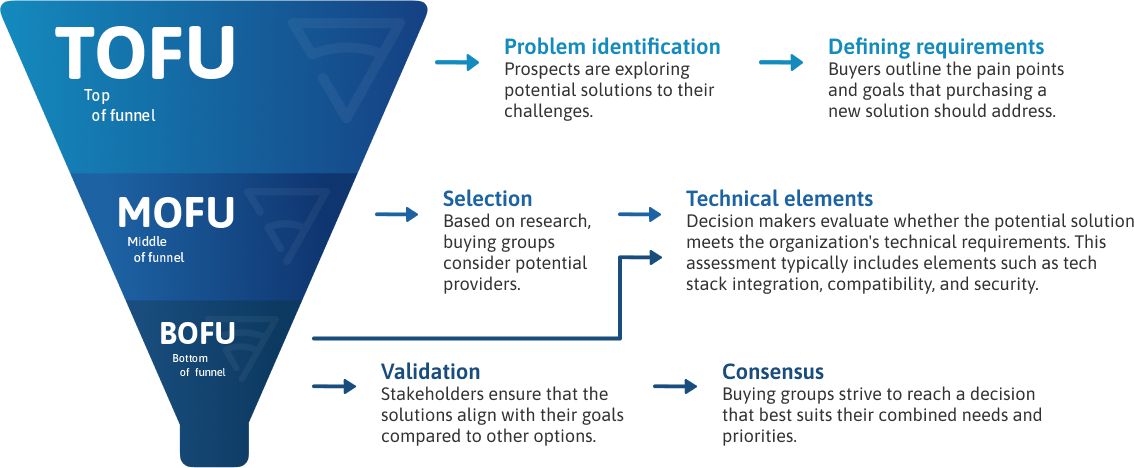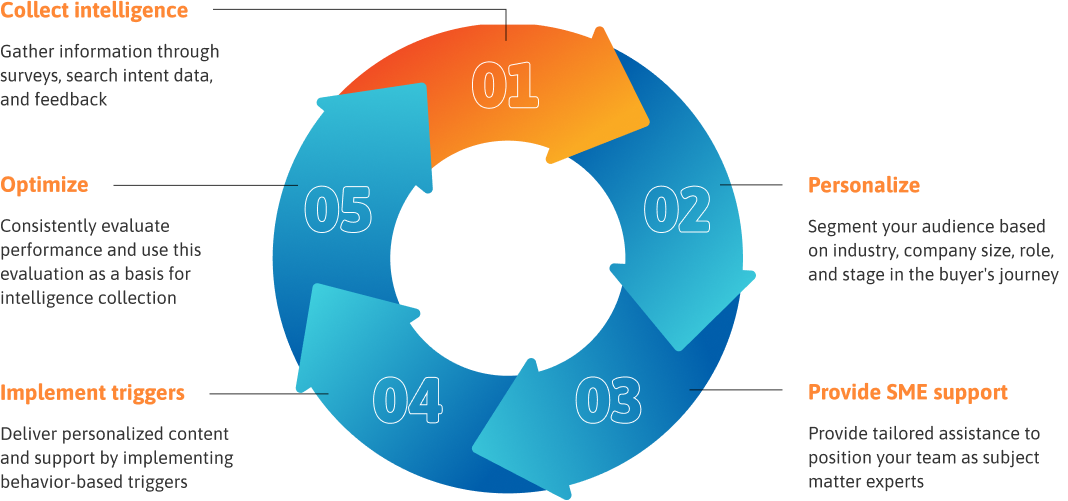Lead nurturing involves supplying prospects with resources and support to facilitate their independent research, making it an integral component of buyer enablement.
By doing so, an effective nurturing strategy builds a relationship with the prospect while simultaneously increasing funnel velocity by simplifying the purchasing process.
As the majority of B2B sales cycles now last more than six months, lead nurturing is essential for ensuring that buyers are engaged and actively encouraged to progress toward making a purchase decision.
Nurturing strategies require a robust database of data insights to adequately meet the complexity of the buying process. Gather data through direct communication with your prospects, search intent data, surveys, and feedback from your sales teams. This data will allow you to identify the in-market status of your prospective buyers and inform nurturing strategies based on their intent and interests.
By segmenting your audience based on criteria such as industry, company size, role, and stage in the buyer’s journey, you can provide stakeholders with materials that address their unique challenges and requirements.
For example, C-level executives could be delivered content that focuses on strategic impact and long-term ROI. Similarly technical professionals could be provided materials that explore product specifications, integration capabilities, and security features.
Effective lead nurturing strategies should go beyond addressing knowledge gaps and should focus on sharing expertise focused on the goals of buyers. Position your team as valuable subject matter experts (SMEs) by providing tailored assistance throughout the buyer’s journey.
This could include offering consultations where your team can assess the specific technical challenges being faced by buyers and recommend tailored solutions. This way your teams can solidify your brand’s expertise and reinforce your UVP.
For example, in the case of a technical professional requiring more details on your solution’s integration capabilities, offering a consultation allows for a far more personalized approach than simply sharing resources.
Behavior-based triggers enable you to deliver highly personalized content and support to prospects based on their engagement patterns. Analyzing intent data, such as the pages and topics buyers are focused on, can be leveraged to establish automatic actions aligned with buyer interests.
It is important to note that, as a part of the nurturing strategy, outreach should be focused on buyer enablement and not on driving for an immediate sale. Sales teams should utilize nurturing to provide additional resources, personalized guidance, and answer questions prospects might have.
Evaluating the performance and timeliness of your content, tools, and outreach efforts can inform improvements to your lead nurturing— and better support your prospects through their buyer’s journey as a result.
Implementing this process establishes a feedback loop. Insights from performance analysis guide the data collection process, which, in turn, serve as a basis for your future strategies.
Lead nurturing does not end at the purchase stage. To ensure long-term client success and decrease churn rates, organizations should regularly provide their clients with resources and content tailored to their needs. This drives buyer enablement after the sale, contributes to increased client lifetime value (CLTV), and creates client expansion opportunities.
















